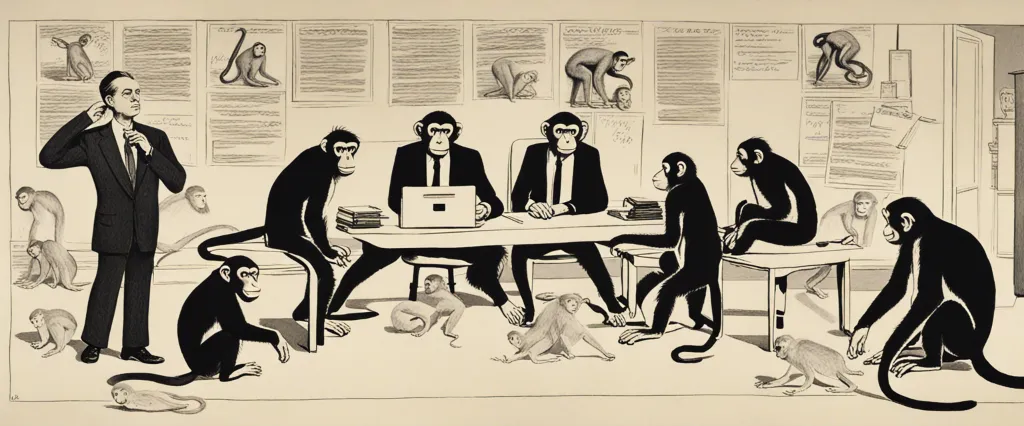In “18 Minutes,” written by Peter Bregman, the renowned management consultant shares his insights on productivity and time management. With a focus on practical strategies, Bregman offers readers a transformative approach to tackling their most critical tasks and achieving meaningful goals. Through real-life examples and actionable advice, the author guides individuals in maximizing their productivity, navigating distractions, and ultimately finding clarity and fulfillment within their daily routines. As an accomplished author and speaker, Peter Bregman has dedicated his career to helping individuals and organizations achieve peak performance. With his expertise in leadership and personal development, Bregman brings a wealth of knowledge and wisdom to help readers optimize their time and accomplish what truly matters.
Chapter 1: Defining Your Focus
Chapter 1 of “18 Minutes” by Peter Bregman, titled “Defining Your Focus,” explores the significance of setting clear priorities and developing a strong sense of purpose to enhance productivity and accomplish meaningful goals.
Bregman asserts that successful individuals are those who can consistently prioritize their time and attention towards what truly matters. He argues that without a clear focus, countless distractions and urgent but unimportant tasks can easily consume one’s day, leaving little room for higher-level achievements. To overcome this, Bregman introduces his 18-minute system, designed to help individuals align their focus with their personal values and long-term goals.
The chapter starts by highlighting the importance of defining a focus with intention. Bregman urges readers to take a step back and assess their current priorities by asking themselves questions such as, “What do I truly care about?” and “What do I want to achieve in the long run?” He emphasizes the significance of aligning personal values with daily actions and how this process can lead to greater fulfillment.
Bregman then introduces three main elements of his 18-minute system: Pause, Plan, and Refocus. Pausing refers to taking a moment to evaluate one’s current state, recognizing achievements, and acknowledging areas that need improvement. Planning involves setting specific and realistic goals for the day and breaking them down into actionable steps. Lastly, Refocusing entails regularly redirecting attention back to one’s chosen priorities throughout the day, letting go of distractions, and staying committed to the goals.
In essence, chapter 1 outlines the need for individuals to define their focus intentionally and proposes a practical framework to achieve this. By gaining clarity on personal values, setting meaningful goals, and incorporating the 18-minute system into their daily routine, readers can thrive in a world full of distractions and achieve long-term success.
Chapter 2: Clarifying Your Goals
Chapter 2: Clarifying Your Goals of the book “18 Minutes” by Peter Bregman focuses on the process of defining and prioritizing your goals effectively. Bregman describes how many of us struggle to clearly identify our goals, resulting in feelings of being overwhelmed and directionless. The chapter aims to provide practical strategies for gaining clarity and achieving meaningful results.
To begin, Bregman suggests the use of a “focus question” – a single, powerful inquiry that grounds our actions and decisions. This question serves as a compass, aligning our daily choices with our long-term objectives. He emphasizes the importance of crafting a clear, action-oriented question that connects to our personal values and aspirations.
The author then introduces the concept of “highlighting” – selecting the most critical activities that align with our goals and devoting time and energy to them, much like a highlighter emphasizes important passages in a text. Bregman encourages readers to identify and prioritize these key activities, focusing on what truly matters instead of getting caught in a cycle of busyness.
Furthermore, Bregman encourages readers to “know their limits” by setting realistic expectations and avoiding overcommitment. He suggests defining boundaries and learning to say no to tasks that don’t align with our goals or priorities.
The chapter also emphasizes the significance of reviewing and revising goals regularly. Bregman advises readers to schedule regular check-ins with themselves to assess progress and make necessary adjustments to their plans. This practice allows for continuous improvement and keeps goals aligned with evolving priorities.
In summary, Chapter 2 of “18 Minutes” provides a framework for gaining clarity by defining goals, using a focus question, highlighting critical activities, setting boundaries, and regularly reviewing and revising goals. By implementing these strategies, readers can align their actions with their aspirations and ultimately, achieve greater fulfillment and success.
Chapter 3: Managing Your Time
Chapter 3 of “18 Minutes” by Peter Bregman, titled “Managing Your Time,” explores the need for effective time management and provides practical strategies for better utilizing our limited time. Bregman emphasizes that time is a finite resource, and it is essential to make conscious choices about how we use it.
The chapter begins by highlighting the importance of prioritization and identifying what really matters to us. Bregman advocates for creating a personal vision or mission statement that serves as a compass for decision-making. By aligning our actions with our values and goals, we can avoid wasting time on activities that do not contribute to our overall objectives.
Bregman introduces his “18 Minutes” system, a daily practice that involves allocating time for planning, prioritizing, and staying focused. The system consists of five steps: (1) set your intentions for the day, (2) review your plans, (3) take regular breaks to refocus, (4) review your day by asking reflective questions, and (5) prepare for tomorrow by organizing your tasks and setting priorities.
He encourages readers to schedule small, frequent breaks throughout the day to recharge and maintain focus. Additionally, Bregman stresses the benefits of reflecting on our actions and evaluating how effectively we managed our time. This allows us to learn from our experiences and make adjustments as necessary.
To overcome common distractions, Bregman advises limiting the number of tasks and projects we take on and learning to say no when necessary. He also suggests finding ways to eliminate or delegate activities that do not align with our priorities.
In summary, Chapter 3 of “18 Minutes” emphasizes the importance of managing our time effectively by aligning our actions with our values, planning daily routines, and regularly reflecting on our progress. By using Bregman’s 18 Minutes system, readers can improve their time management skills and achieve greater focus and productivity.
Chapter 4: Creating Positive Habits

Chapter 4 of “18 Minutes” by Peter Bregman is titled “Creating Positive Habits” and provides guidance on how to build and maintain habits that contribute to personal and professional growth. Bregman highlights that habits are powerful because they allow us to perform certain actions consistently without requiring constant decision-making. He emphasizes that intentionally creating positive habits can have a significant impact on our lives.
The chapter begins by distinguishing between two types of habits: positive habits, which contribute to our well-being and success, and negative habits, which hinder our progress. Bregman encourages readers to identify the negative habits they want to break and adopt new positive habits in their place. He suggests starting with small and achievable habits that can be built upon over time.
Bregman introduces the “Rule of Thumb” technique as a helpful tool for habit formation. This technique involves consciously associating a desired habit with an established routine or behavior. By creating this connection, individuals can trigger the new habit through the existing routine, making it easier to adopt.
Moreover, the author emphasizes the importance of consistency and repetition in habit formation. He advises readers to set specific goals, commit to them, and track their progress. Tracking progress allows individuals to hold themselves accountable and adjust their approach if necessary.
Bregman also explores the role of willpower in habit formation. He argues that relying solely on willpower can be exhausting and unsustainable. Instead, he suggests building an environment that supports positive habits and reduces the likelihood of succumbing to temptation.
In conclusion, Chapter 4 of “18 Minutes” emphasizes the importance of intentionally creating positive habits to achieve personal and professional growth. Bregman provides practical strategies such as the Rule of Thumb technique, consistency, and creating a supportive environment. By implementing these ideas, individuals can foster positive habits that will contribute to their success and overall well-being.
Chapter 5: Dealing with Priorities
Chapter 5: Dealing with Priorities in the book “18 Minutes” by Peter Bregman explores the crucial aspect of identifying and managing priorities effectively. Bregman emphasizes that being clear about our priorities allows us to make intentional choices and take purposeful actions, leading to increased productivity and overall success.
The chapter begins by discussing the importance of acknowledging that we cannot do everything. Bregman encourages readers to focus on the most important areas of their lives and determine the few key objectives that matter the most to them. These crucial areas, or “big rocks” as Bregman calls them, serve as the foundation for prioritization.
To effectively manage priorities, Bregman introduces the concept of “focus days.” These are the days when you dedicate your time and energy solely to your top priorities. By blocking time specifically for these important tasks and avoiding distractions, you increase your chances of accomplishing meaningful work.
In addition to focus days, Bregman suggests setting aside “buffer days” for handling less critical tasks, responding to emails, and attending meetings. Buffer days provide structure and prevent these tasks from overshadowing your core priorities.
Furthermore, Bregman outlines the significance of “reset days.” These are days when you review your progress, evaluate your goals, and adjust your priorities if necessary. Regularly scheduling reset days helps you stay aligned with your long-term objectives and adapt to changes in your personal or professional life.
Finally, the chapter delves into the importance of saying “no” to non-essential tasks and requests that do not align with your priorities. Bregman advises readers to be assertive but kind when declining such requests to protect their time and energy.
In summary, Chapter 5 of “18 Minutes” emphasizes the significance of identifying priorities, dedicating focused time to them, and regularly reviewing and adjusting them. By doing so, individuals gain control over their time, accomplish what truly matters to them, and ultimately achieve greater success.
Chapter 6: Building Effective Communication
Chapter 6 of “18 Minutes: Find Your Focus, Master Distraction, and Get the Right Things Done” by Peter Bregman explores the importance of building effective communication. Bregman highlights the significance of clear and concise communication in achieving one’s goals and collaborating with others.
The chapter starts by emphasizing the need to acknowledge and manage the distractions that hinder effective communication. Bregman suggests actively listening to others, showing genuine interest, and avoiding distractions that may prevent understanding and connection. He encourages creating a calm and focused environment conducive to meaningful conversations.
Bregman then introduces the concept of “the hard part,” which involves having tough conversations that address issues or conflicts. He argues that avoiding difficult conversations only prolongs the problem and limits personal and professional growth. Instead, he shares a step-by-step process for fostering effective communication during challenging discussions. This includes using “I” statements to express feelings, focusing on specific behaviors rather than personal attacks, and actively listening to the other person’s perspective.
Furthermore, Bregman explores the role of nonverbal communication, emphasizing the need to align verbal and nonverbal cues to enhance clarity and understanding. He explains how gestures, body language, tone of voice, and facial expressions can significantly impact the message conveyed.
The chapter also delves into the importance of clear and concise written communication, offering tips on crafting effective emails and other forms of written correspondence. Bregman suggests being mindful of the audience, keeping messages concise and to the point, and utilizing clear subject lines to capture attention.
Ultimately, Chapter 6 of “18 Minutes” underscores the significance of effective communication in personal and professional interactions. Bregman provides practical strategies for managing distractions, engaging in difficult conversations, aligning verbal and nonverbal cues, and improving written communication. By utilizing these principles, individuals can enhance their communication skills, foster better relationships, and achieve their desired outcomes.
Chapter 7: Resolving Conflicts and Challenges
Chapter 7 of “18 Minutes” by Peter Bregman focuses on resolving conflicts and overcoming challenges. Bregman explains that conflicts and challenges are inevitable in both our personal and professional lives, and it is crucial to address them effectively to maintain healthy relationships and achieve goals.
The chapter starts with Bregman sharing an encounter with his friend, Charlie, who was facing a conflict with a colleague. Bregman suggests that conflicts often arise due to unmet expectations and advises readers to examine their own expectations before addressing conflict. He emphasizes the importance of separating facts from assumptions and understanding the objective truth of the situation.
Bregman introduces the concept of “the third story,” which is a perspective that incorporates both parties’ viewpoints in a conflict. He emphasizes the significance of actively listening to the other person’s perspective and seeking to understand their needs and desires. By finding common ground and identifying shared goals, a resolution can be reached that benefits both parties.
To effectively resolve conflicts, Bregman offers a four-step process: acknowledge, reflect, choose, and act. Acknowledging the conflict entails accepting that a problem exists and actively seeking a solution. Reflecting involves examining personal emotions and motivations, as well as considering the perspective of the other party. Choosing requires making a conscious decision to address the conflict and commit to finding a resolution. Finally, acting involves taking appropriate action to resolve the conflict, whether through open communication, compromise, or seeking additional support.
Bregman reminds readers that conflict resolution is an ongoing process and encourages a proactive approach to prevention. By focusing on clear communication, setting boundaries, and understanding individual needs, it is possible to minimize conflicts and create a more harmonious environment.
Overall, Chapter 7 of “18 Minutes” emphasizes the importance of addressing conflicts head-on, seeking to understand different perspectives, and taking proactive steps to prevent future conflicts. By doing so, individuals can cultivate stronger relationships and achieve personal and professional success.

Chapter 8: Cultivating Self-Reflection Skills
Chapter 8 of “18 Minutes” by Peter Bregman, titled “Cultivating Self-Reflection Skills,” focuses on the importance of self-reflection in our daily lives. Bregman introduces the concept of the “Right Moment,” which refers to a moment of pause that allows us to reflect on our thoughts, actions, and goals.
The author explains that self-reflection is vital in order to become more self-aware and make intentional choices. It helps us understand our values, emotions, and motivations, allowing us to align our actions with our long-term goals.
Bregman suggests several practical strategies to develop self-reflection skills. He advises creating “touchpoints,” which are reminders throughout the day to pause and reflect on our thoughts and behaviors. These touchpoints can be triggered by setting alarms on our phones or associating them with specific actions, such as entering or exiting a building.
Additionally, the author emphasizes the importance of building a supportive network to encourage self-reflection. He suggests finding accountability partners, mentors, or coaches who can provide guidance and challenge our assumptions, ultimately helping us grow.
Bregman also highlights the significance of self-compassion during the process of self-reflection. Rather than being overly critical, he urges readers to approach themselves with kindness and understanding, celebrating small victories and learning from mistakes.
Finally, the author concludes the chapter by noting that self-reflection is a lifelong practice that requires consistency and intentionality. By regularly pausing to reflect on our actions and make necessary adjustments, we can improve our decision-making, productivity, and overall happiness.
In summary, Chapter 8 of “18 Minutes” emphasizes the transformative power of self-reflection. Bregman provides practical strategies to cultivate self-reflection skills, such as creating touchpoints, building a supportive network, and embracing self-compassion. Through consistent self-reflection, we can become more self-aware and make intentional choices that align with our long-term goals.
After Reading
In conclusion, “18 Minutes” by Peter Bregman is a practical and insightful guide that helps individuals improve their productivity, focus, and overall satisfaction in both their personal and professional lives. The book presents a clear framework based on the principles of clarity, focus, and engagement, which can be easily implemented in just 18 minutes a day. Through relatable anecdotes and actionable strategies, Bregman emphasizes the importance of setting clear goals, prioritizing tasks, and establishing healthy habits to achieve long-term success. By mastering these principles, readers will be able to make the most of their time, accomplish their goals, and lead a more meaningful life.
1. Atomic Habits: An Easy & Proven Way to Build Good Habits & Break Bad Ones” by James Clear – This book provides practical strategies for creating positive habits and eliminating negative ones, helping readers maximize productivity and achieve their goals.
2. Deep Work: Rules for Focused Success in a Distracted World” by Cal Newport – In this book, the author explores the concept of deep work and offers strategies for cultivating a focused and distraction-free work environment, leading to increased productivity and meaningful achievements.
3. Getting Things Done: The Art of Stress-Free Productivity” by David Allen – Known as a master of personal and professional organization, David Allen presents a system for effective time management and organization, helping readers achieve a stress-free and highly productive life.
4. The Power of Habit: Why We Do What We Do in Life and Business” by Charles Duhigg – Drawing on scientific research and real-life examples, the author delves into the power of habits and how they influence our daily lives. This book offers valuable insights and techniques for harnessing the power of habits to enhance productivity and wellbeing.
5. Essentialism: The Disciplined Pursuit of Less” by Greg McKeown – In this book, readers will learn how to prioritize their time and energy on the essentials, rather than getting caught up in the never-ending cycle of busyness. By focusing on what truly matters, individuals can achieve greater results and lead more fulfilling lives.




